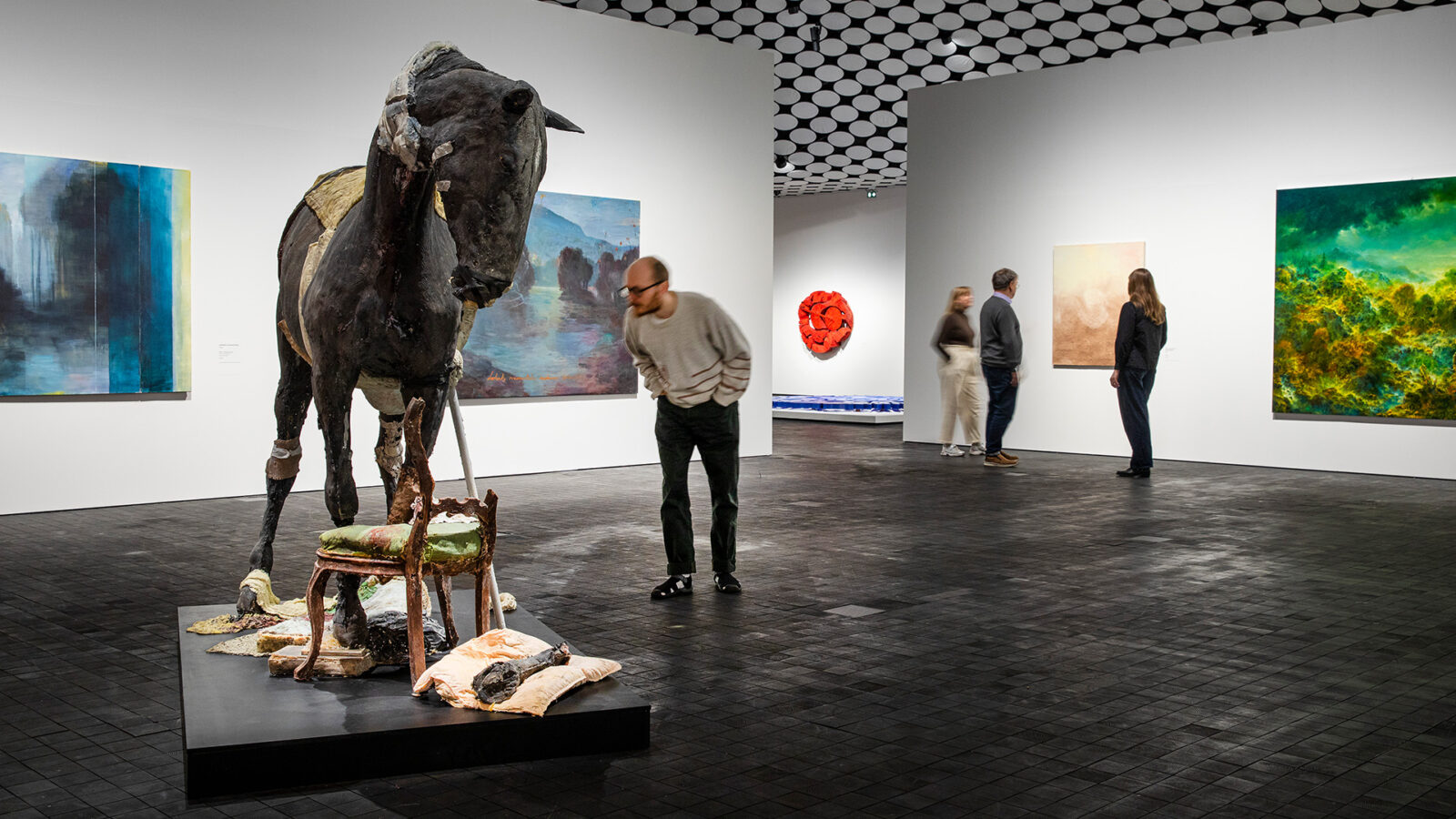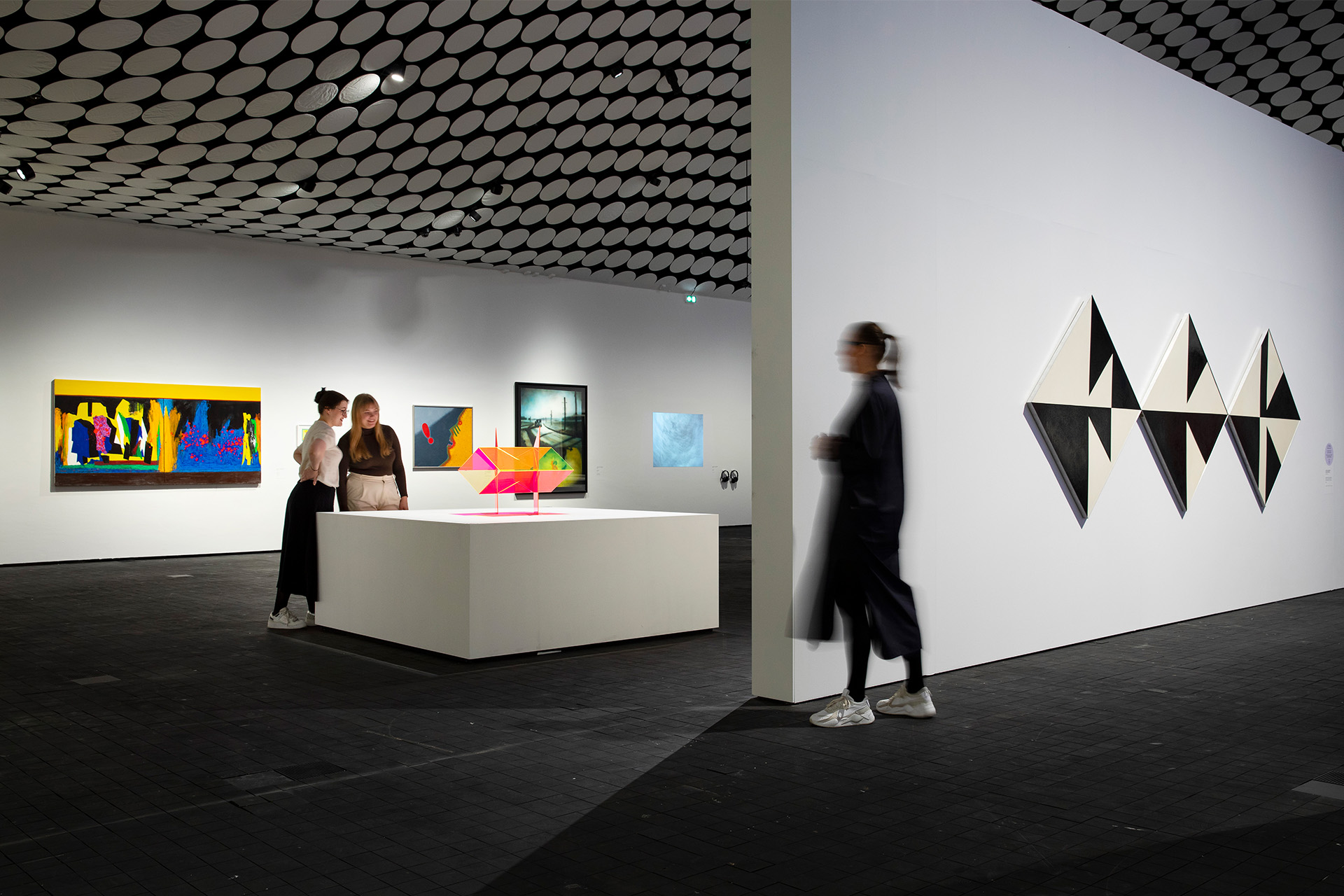I feel, for now
27 March – 8 September 2024

I feel, for now
Art moves us, or not, in ways that we ourselves do not always quite understand, let alone knowing how to put them into words.
I feel, for now is Amos Rex’s first exhibition of works from its own collections on this scale, and takes us through the art into emotions. The more than a hundred artworks chosen for the exhibition carry us from isolation to empathy, from ecstasy to nostalgia. The wide-ranging exhibition I feel, for now, will show works from the collection made by more than 70 artists from the 1960s up to the present.
Exhibition
I feel, for now
The title of the exhibition refers not only to Kari Cavén’s ambiguous artwork with the same name (1990), but also to the fluidity and transient nature of emotions. The five themes of the exhibition are intertwined with diverse emotions, but also with each other. We traverse from subterranean, repressed mental landscapes through the spirituality kindled by art, into nostalgia, the verbal expression of emotions, and the atmosphere shaped by the mediation of materials and different senses. Visitors are invited to create their own routes through the exhibition, with any emotions they experience along the way never being either right or wrong.
A museum would not be a museum without its collections – the entire museum institution has its origins in humankind’s innate need to collect things. Who does the collecting and on what basis, as well as what is put on display in exhibitions, is, of course, crucial. Accumulating and presenting the works in collections always involves an exercise of power. The choices made inform the construction of the art history of the future, and hence our understanding of the world around us. At the same time, besides shaping the museum´s exhibition programme, the collections also paint the museum’s own individual portrait. Föreningen Konstsamfundet’s art collection is managed by Amos Rex and comprises more than 6 000 works. It is based on the body of some 400 artworks built up by the businessman, newspaper publisher and patron of the arts Amos Anderson (1878–1961). His home museum, Amos Andersons Hem – opened on Yrjönkatu Street, Helsinki, in spring 2023 – and Söderlångvik Museum on Kimito Island both house permanent displays of mostly older works from the collection.
The extensive and vast exhibition at Amos Rex art museum presents over 100 artworks from 76 artists, extending from the 1960s to the present day. Art works include painting, installation art, sculpture, video art, photography and sound art.
The exhibition is curated by Kai Kartio, Krista Mamia, Kaj Martin and Katariina Timonen with intuition and talent.
The artists:

Martti Aiha, Petri Ala-Maunus, Henni Alftan, Ville Andersson, Pia Backström, Juhana Blomstedt, Elina Brotherus, Kari Cavén, Maria Duncker, Saara Ekström, Carolus Enckell, Leonora Fredriksson, Susanne Gottberg, Kaisaleena Halinen, Tiina Heiska, Heli Hiltunen, Ylva Holländer, Kari Huhtamo, Petri Hytönen, Kauko Hämäläinen, Icelandic Love Corporation, Petra Innanen, Aarne Jämsä, Keiken, Kaisu Koivisto, Matti Kujasalo, Jarmo Kukkonen, Tiina Laitanen, Ahti Lavonen, Henrika Lax, Juhani Linnovaara, Liisa Lounila, Jan Olof Mallander, Åke Mattas, Elina Merenmies, Ernst Mether-Borgström, Marika Mäkelä, Viljo Nieminen, Lars-Gunnar Nordström, Thomas Nyqvist, Perttu Näsänen, Hans Op de Beeck, Sara Orava, Paul Osipow, Kalervo Palsa, Roland Persson, Caroline Pipping, Pauno Pohjolainen, Vesa-Pekka Rannikko, Raimo Reinikainen, Anna Retulainen, Hans Rosenström, Eino Ruutsalo, Janne Räisänen, Emma Rönnholm, Stiina Saaristo, Maiju Salmenkivi, Pia Salo, Timo Sarpaneva, Kim Simonsson, Carl-Erik Ström, Mari Sunna, Risto Suomi, Aimo Taleva, Oona Tikkaoja, Tommi Toija, Anu Tuominen, Minna Tuominen, Pauliina Turakka Purhonen, Marianna Uutinen, Kari Vehosalo, Camilla Vuorenmaa, Viggo Wallensköld, Jan Kenneth Weckman, Sofia Wilkman ja Henry Wuorila-Stenberg.
